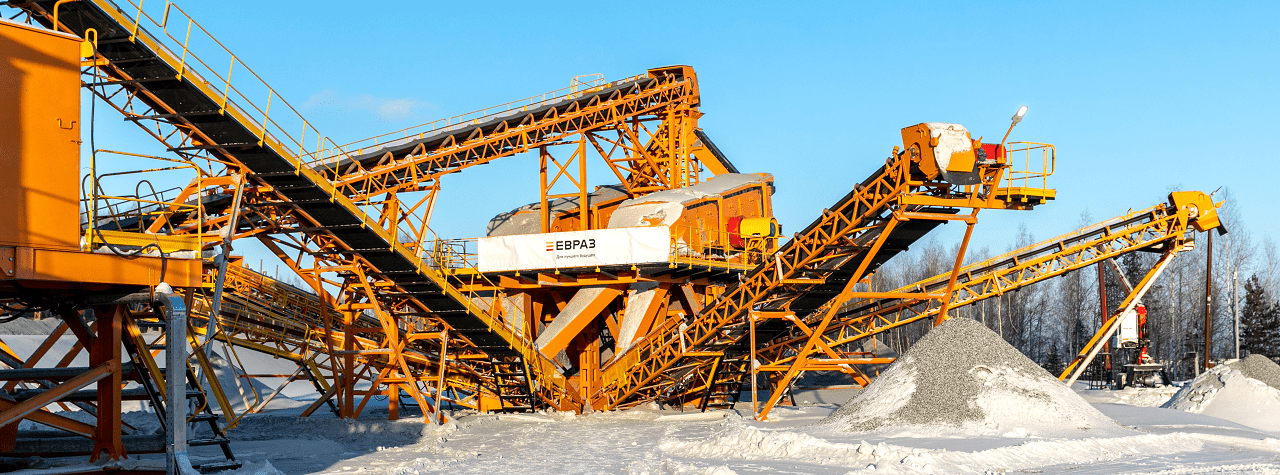Waste stewardship
GRI 306-1, 306-2, 306-4, 306-5In its business activities, EVRAZ produces large volumes of general and metal production waste (not related to mineral extraction), as well as mining waste, such as overburden, tailings and barren rock. The Group uses the best available practices of waste management methods in this area to make rational use of natural resources and reduce waste generation. These are the components of our waste management approach, listed in order of priority on the right.
Minimise at the source
- Improve technological processes to enhance product quality
- Secure by-products without generating waste
Reuse
- Reuse main types of waste from metal production: slag, clinker and tailings, including from old dumps
Recycle
- Develop new products that feature various types of waste
- Use inert waste to reshape land plots and to build dams or roads
Burn as fuel / Generate heat
- Generate heat from hot slag; use waste for heating (local boilers)
Store
- Store waste that cannot be used today safely, retaining the option
- of using the locations as industrial sites in the future
Burn
- It is forbidden to: “burn production and consumption waste without special facilities or dump it outside designated areas” (EVRAZ Fundamental Environmental Requirements)
The amount of waste and by-products generated at our enterprises in 2021 totalled to 195.7 million tonnes, including 8.6 million of non-mining waste.
EVRAZ strives to increase the amount of recycled and reused waste in accordance with its Environmental strategy. In 2021, 66.8 million tonnes of waste (including mining waste) were recycled. Nonhazardous mining waste is used for land restoration and the construction of dams and roads.
EVRAZ considers the safety of tailings storage facilities (TSFs) a priority, as their use poses significant environmental risks. The Group owns three metallurgical TSFs located at EVRAZ ZSMK and EVRAZ KGOK. The dam safety management system ensures compliance with the relevant legislation and covers all stages of TSF service life: design, construction, operation and closure. Safety is continually monitored, and our TSFs are regularly reviewed by both internal and external specialists and regulators.

EVRAZ Kachkanarsky Ore Mining-and-Processing Integrated Works (EVRAZ KGOK) began processing waste rock into five new types of crushed stone in compliance with state requirements. This investment initiative has become part of an environmental strategy aimed at increasing the volume of recycled mining waste.
In the plant's area, a crushing and screening complex and a crushed stone screening unit were constructed, a productive loader was obtained, and a modular structure for staff was equipped. The new facility will manufacture crushed stone fractions ranging in size from 5 to 40 millimetres. The project received almost the US$2.72 million investment. There were created 19 new positions.. The facility has an annual production capacity of 1.8 million tonnes of fractional crushed stone. Crushed stone is in high demand in the road building industry, particularly for its high strength qualities.

EVRAZ ZSMK is implementing a project for the dry disposal of waste from the processing plant of the by-product coke production. EVRAZ’s environmental strategy calls for a rise in the amount of industrial waste that is recycled, and this initiative strives to achieve that goal. The waste that is generated after coal enrichment is dehydrated and will be used as a raw material to produce a finished product. The factory’s output will be used for infrastructure development, such as road backfilling and land reclamation. Due to this, the amount of waste in the sludge storage will be reduced by 60%.
The investment in the factory is expected to be around US$12.22 million. The project will be completed in 2022. The implementation of the project will reduce the load on the arrival of the rock and extend the service life of the sludge storage for another 15 years. As part of the project, the plant will carry out technical re-equipment of the coal preparation shop install additional new dewatering equipment and conveyors. A dry waste disposal bunker and a conveyor gallery will be constructed, and various pulp pumping stations will be upgraded.
A new landfill was constructed on the site of a former slag heap adjacent to the rail platform. Throughout the duration of operation, up to 3 million tonnes of solid non-recyclable waste classified as hazard classes 4 and 5, or low-hazard and non-hazardous waste will be disposed of there. The new polygon covers an area of 85 thousand square metres.
The landfill was constructed in accordance with all applicable environmental requirements. A two-meter layer of crushed blast-furnace slag was laid, followed by sand and a 1.5-mm waterproof barrier—a unique geomembrane. It will ensure that ground and subsurface waters are not contaminated; over US$6.79 million invested in the landfill's construction.